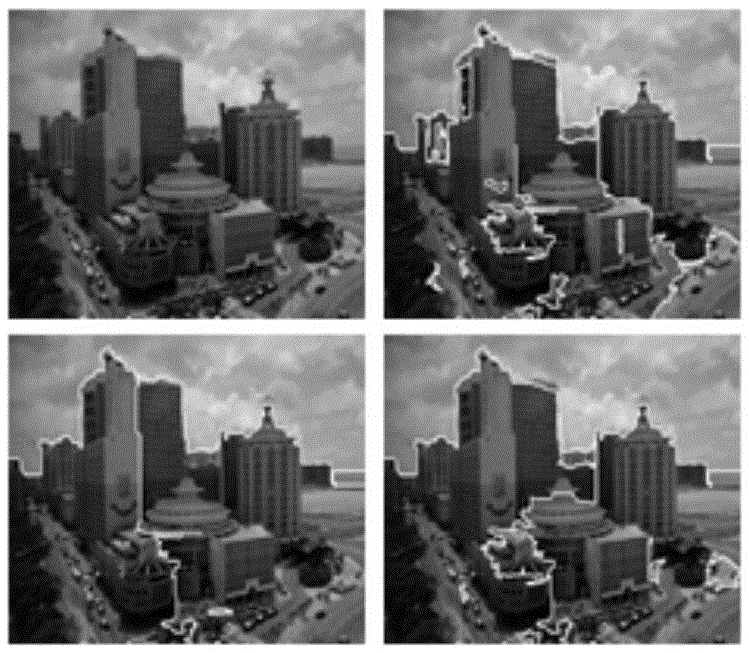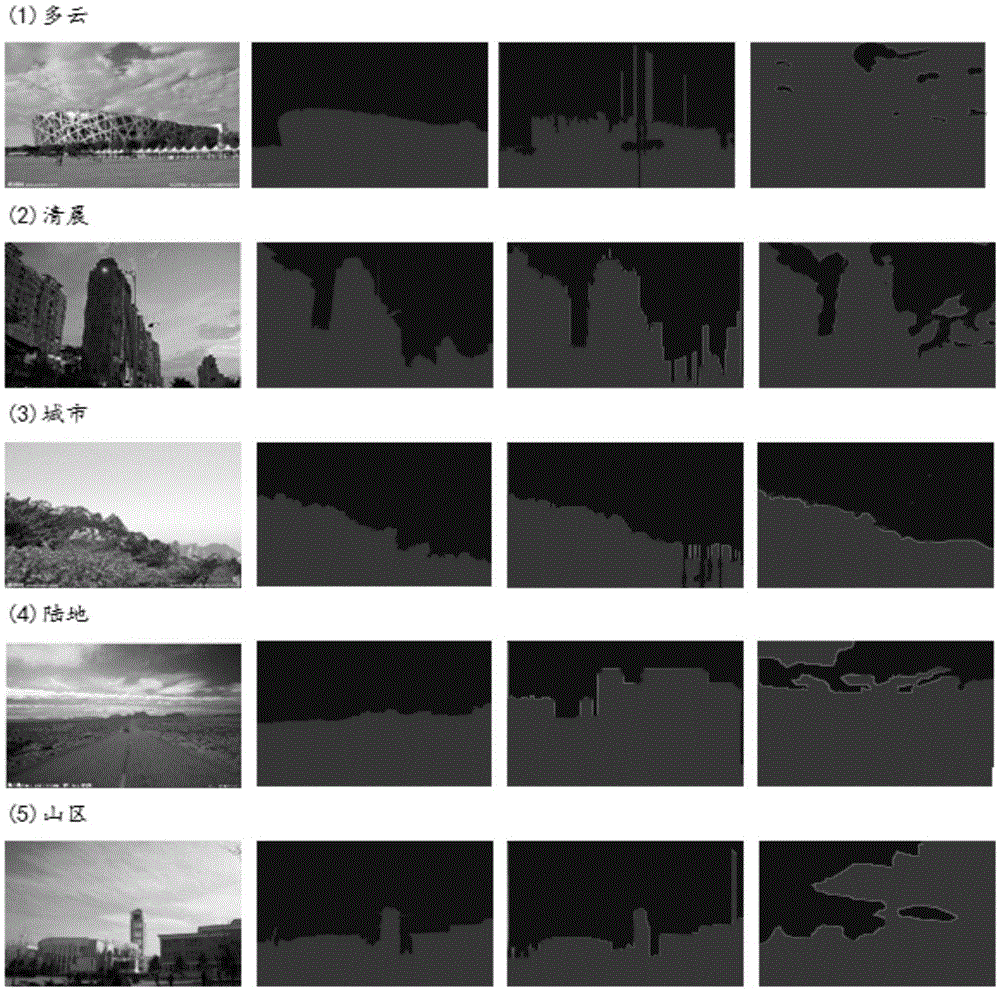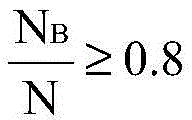Sky detection algorithm based on context inference
A sky detection and context technology, applied in the field of scene understanding, can solve problems such as the similarity between sky and non-sky areas that cannot adapt to complex changes in the sky
- Summary
- Abstract
- Description
- Claims
- Application Information
AI Technical Summary
Problems solved by technology
Method used
Image
Examples
Embodiment Construction
[0047] The present invention will be described in detail below in combination with specific embodiments.
[0048] Step 1: Create a sky sample dataset
[0049] For common sky regions, it can be investigated from two different angles of time and weather. Temporalally, the morning sky, midday sky, and evening sky differ significantly in color and brightness, so morning, noon, and evening sky samples should be included in the dataset. Similarly, from the weather point of view, there are significant differences in the characteristics of the sky area under weather conditions such as sunny, cloudy, cloudy, and haze, so the data set should also include different weather conditions such as sunny, cloudy, cloudy, and haze The sky sample below. In the collected image set, an image contains both sky area and non-sky area. Similarly, the non-sky area should also contain samples of different landform features, including cities, villages, grasslands, deserts, forests and other different t...
PUM
 Login to View More
Login to View More Abstract
Description
Claims
Application Information
 Login to View More
Login to View More - R&D
- Intellectual Property
- Life Sciences
- Materials
- Tech Scout
- Unparalleled Data Quality
- Higher Quality Content
- 60% Fewer Hallucinations
Browse by: Latest US Patents, China's latest patents, Technical Efficacy Thesaurus, Application Domain, Technology Topic, Popular Technical Reports.
© 2025 PatSnap. All rights reserved.Legal|Privacy policy|Modern Slavery Act Transparency Statement|Sitemap|About US| Contact US: help@patsnap.com



